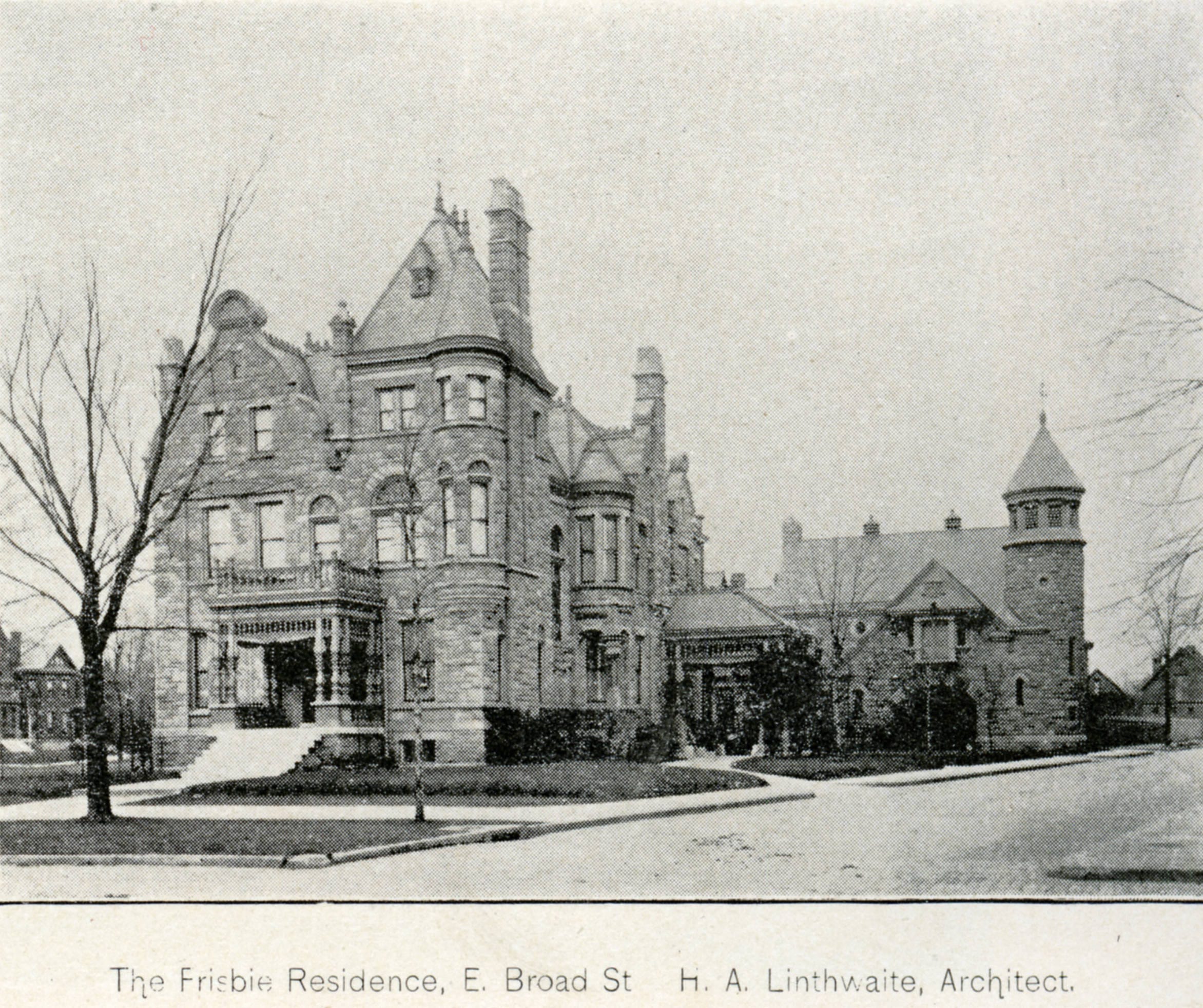Lost Columbus: Schumacher Mansion Owner Made His Fortune Pitching Peruna Elixir
In 1961, crews tore down the grand 1880s Broad Street mansion that once belonged to ad man Frederick W. Schumacher, who once ran the precursor to the Columbus Museum of Art.

East Broad Street still boasts some of our city’s most impressive homes, most of them recycled into new uses and thankfully still with us. One of the most outstanding belonged to Frederick W. Schumacher and is remembered as the Schumacher Mansion even though it disappeared 60-plus years ago.
The 12,000-square-foot home and its equally grand carriage house were built between 1886 and 1888 at 750 E. Broad, immediately west of Broad Street Presbyterian Church, for Mary L. Frisbie, the apparently well-off widow of a local hardware merchant. Her name is memorialized in the Frisbie Apartments now occupying the house’s site.
Schumacher bought the house in 1901. A native of Denmark born in 1863, he immigrated to Texas, trained as a pharmacist in St. Louis and amassed a fortune in Columbus as the head of advertising for one of our more colorful businessmen, Samuel B. Hartman. In the free-wheeling years before the Food and Drug Administration, all manner of potions, elixirs, powders and whatnot could be marketed as good for what ailed you, and Hartman offered a product that was hard to resist: Peruna, a potent liquid that claimed protection against “the ills of winter,” particularly “winter catarrh.” It sold like crazy, perhaps in part because it reportedly had a 25 percent alcohol content.
Schumacher married Hartman’s daughter, Maribel, in 1895. They separated in 1917 in something of a local scandal and later divorced, leaving Schumacher to live alone in the Broad Street mansion for 40 years. He opened his home for tours of his large art collection and headed the Columbus Gallery of Fine Arts (now the Columbus Museum of Art) between 1904 and 1923. After his 1957 death, the museum received his collection of nearly 150 works.
After Schumacher died, there was talk of preserving his house, and it was opened several times for public tours. Nothing came of the preservation effort, however, and in 1961, the Schumacher Mansion was demolished for a proposed hotel. That, as so often happens, never materialized. A medical building built on the site in the 1980s was replaced by the current apartment building a few years ago.
Sources: Columbus Metropolitan Library; nhsinform.scot; “Catarrh Remedy: Peruna Scandal,” Library of Congress; Columbus Evening Dispatch, Sept. 26, 1917; “Forgotten Landmarks of Columbus,” Tom Betti and Doreen Uhas Sauer
This story is from the March 2024 issue of Columbus Monthly.